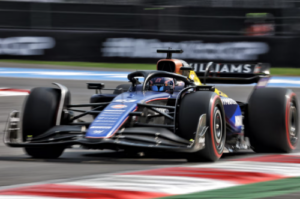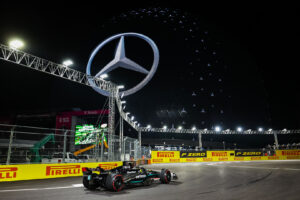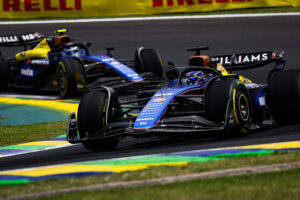In 2016, it was announced that a new chassis would be designed for the 2018 IndyCar campaign and the company charged with delivering the chassis was Dallara.
2018 IndyCar Chassis revealed and put through its paces at IMS
Dallara were given a number of targets to aim for when coming up with the new design including improved safety, a sleeker look, increased aerodynamic performance and fewer parts that would be more accessible and more cost effective for teams.
The most common injuries sustained in the current cars are injuries to the pelvis and hips as was seen in Sebastien Bourdais’ accident during qualifying for the Indy 500. In an effort to temper the damage done in this area when incidents occur, the new chassis has reinforced, widened sidepods and the radiators within them have been shifted forward to allow impacts to be better absorbed. The underside of the sidepods will be a hybrid construction made using carbon/dyneema fibres which strengthen and protect from intrusion in this area.
To increase the performance of the cars, not only have they been made lighter, but there has been a notable shift in aerodynamic philosophy with 66% of the downforce now generated by the floor of the car. This will increase cornering speeds and high speed stability but it has also allowed for a reduction in complexity of the upper aero elements. These factors mean that following and overtaking will be less effected by the turbulent wake from cars in front.
At the request of the drivers, the weight distribution has been shifted forward slightly which is evident from the new design, particularly around the rear wheels, with the rear wheel guards being dropped completely, exposing the tyres and rear suspension components.
This reduction in visible aero components has afforded the cars a sleeker, simpler look, reminiscent of those of the early 1990’s.
To keep these factors consistent, a universal body kit has been introduced. This offers a degree of parity throughout the field and the simplification of the upper surface allows a reduction in costs to obtain new parts of 30 – 40%. Current teams are welcoming this move and it is hoped that it will attract new manufacturers to the series in the future. It also means that the cost of converting to the new chassis will be less than previously expected
There is built in scope within the design to add a cockpit windscreen, although this will be considered at a later date when the development work is complete.
Following the official unveiling on Tuesday, two of the chassis were handed over to IndyCar veterans, Juan Pablo Montoya and Oriol Servia. Between them, they completed over 100 laps of the IMS in the new machinery and, barring a software glitch in Servia’s car, the afternoon couldn’t have gone better. There was excellent correlation between track performance and the data gathered using the wind tunnel and using CFD.
The test included short runs which acted as a shakedown before longer runs assessed the durability of the chassis. Such was the success of the running, the analysis that was due to be covered in two days was completed in one.
Upon completion of the test, Servia said “From Lap 1 it just felt like home. The car felt great. I was flat out of the pits, which doesn’t say much about my smarts, but it does explain how good the car felt right away.” He continued “It just feels right and we’re not having any issues or moments out there. Very consistent. My second long run, I think, was one of my most consistent runs I’ve done at this track in all of my years.”
Confirmation of this statement can be seen in the data which shows that Servia hit 217mph in just his fourth lap in the car.
Montoya was also pleased with the handling of the new car “It’s exciting because, for the first time in the car, it drives really, really well. I think they addressed a lot of the things and the car looks great. I think having one aero kit for everybody is great for the sport. The car looks good and it drives really good.”
The teams will take delivery of their new chassis in November following three further tests due to take place in August and September.






